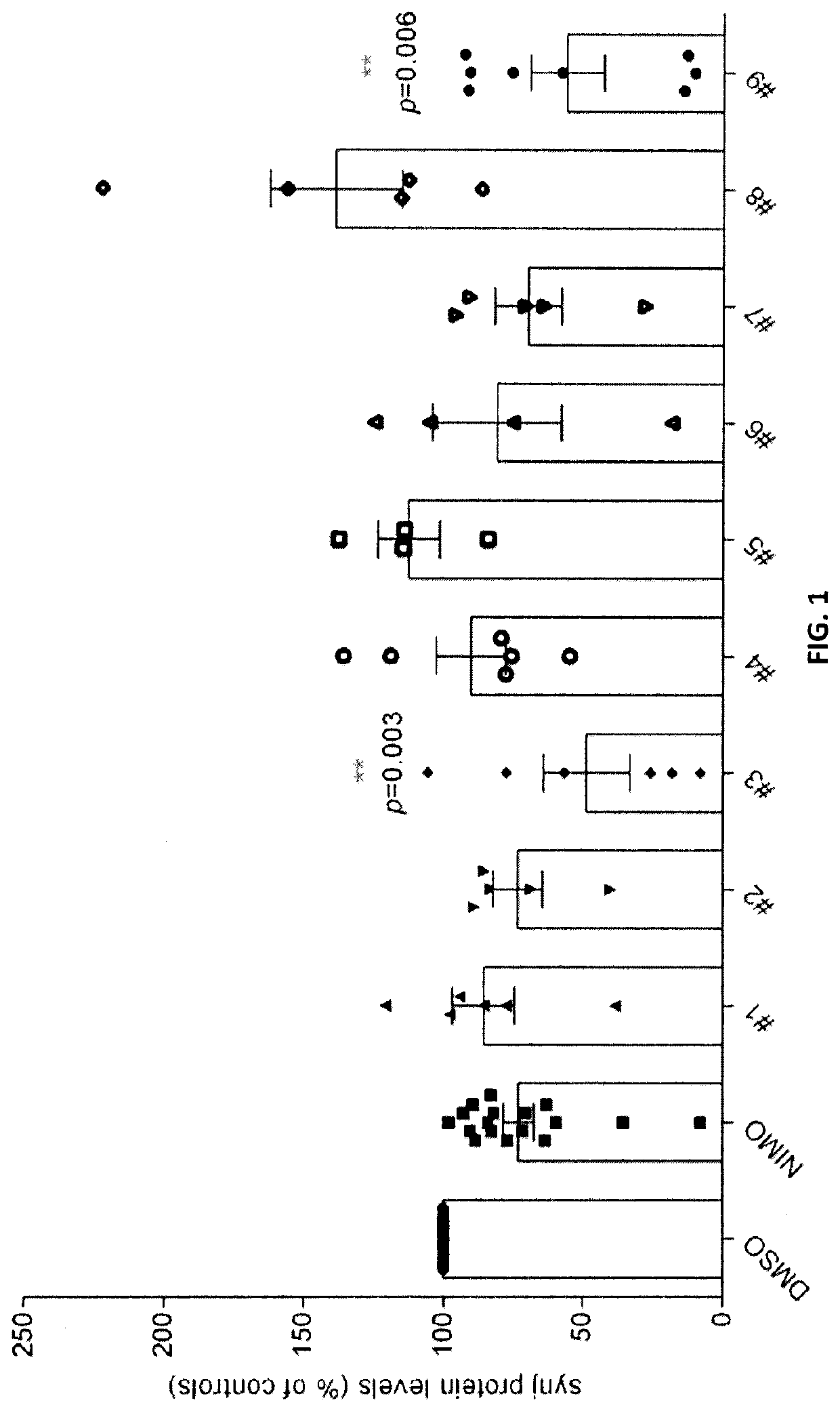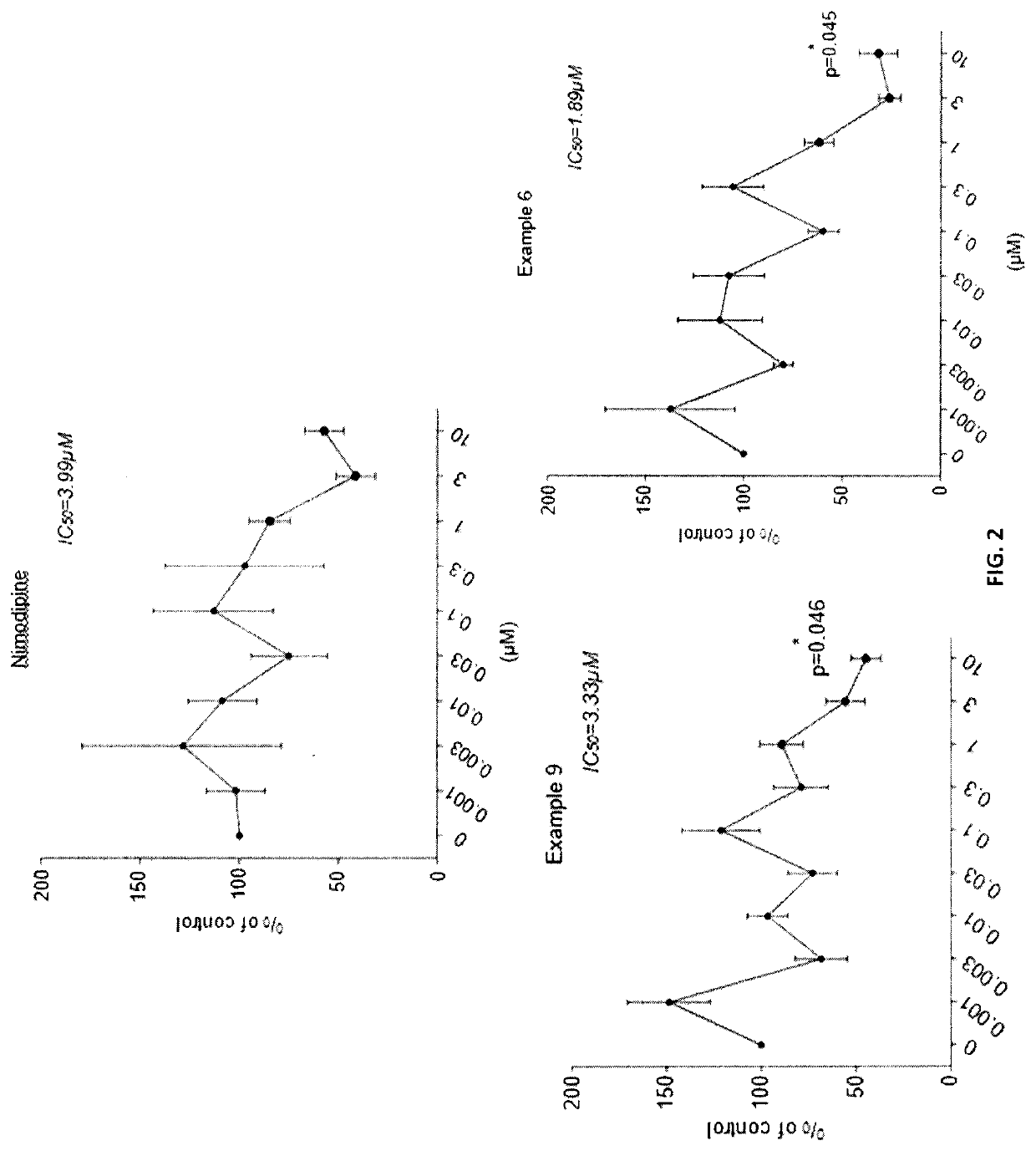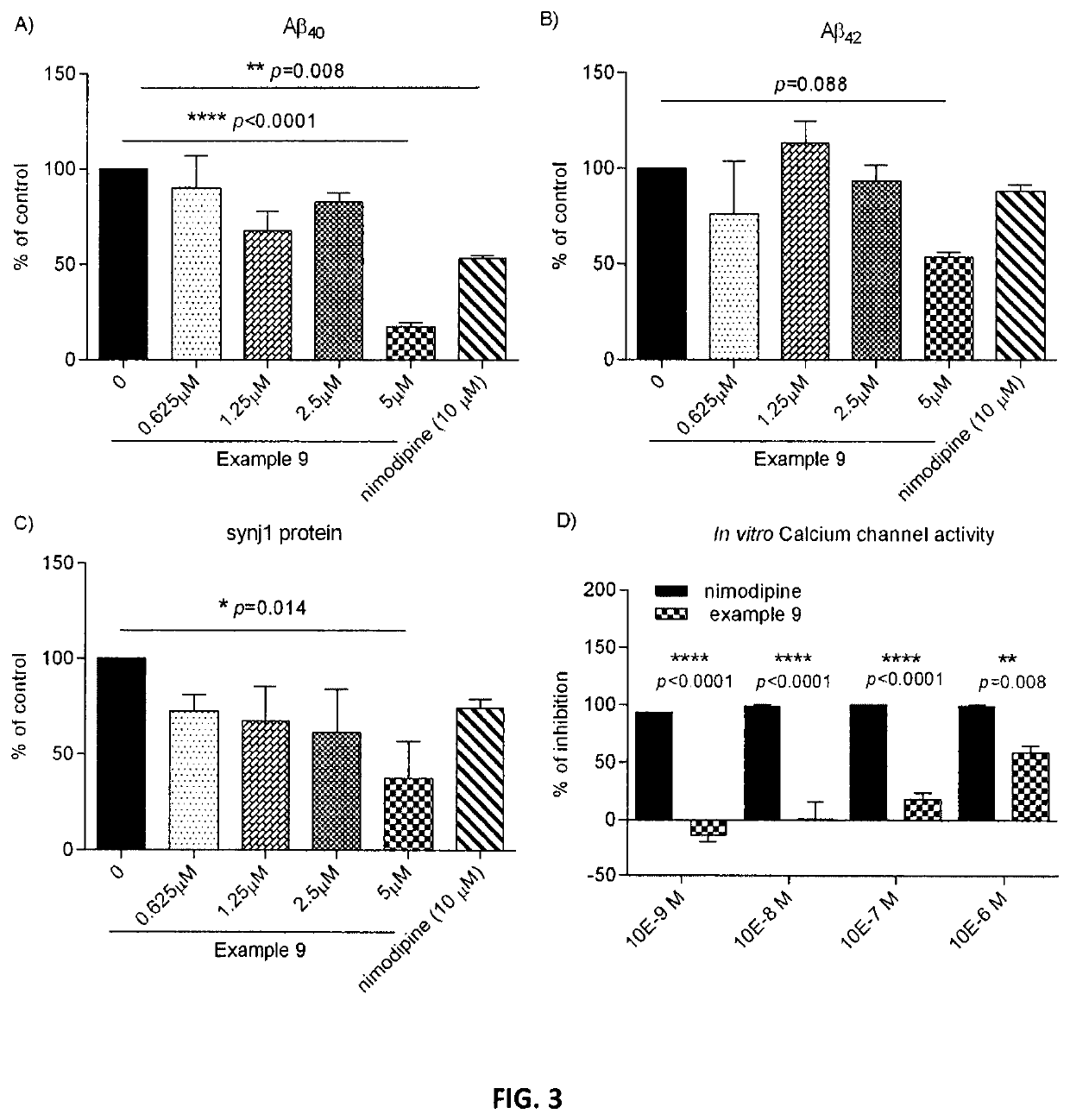Dihydropyridines for the treatment of cognitive impairment or traumatic brain injury
a technology of traumatic brain injury and dihydropyridine, which is applied in the field of dihydropyridine chemical modulators for the treatment of cognitive impairment or traumatic brain injury, can solve the problems of extended negative effects, problems with cognitive function, motor function, and pervasiveness of neurodegenerative disorders, and achieve the effects of inhibiting synaptojanin 1 activity
- Summary
- Abstract
- Description
- Claims
- Application Information
AI Technical Summary
Benefits of technology
Problems solved by technology
Method used
Image
Examples
examples
Synthesis of 3-isopropyl 5-(2-methoxyethyl) 4-(4-(tert-butyl)phenyl)-2,6-dimethyl-1,4-dihydropyridine-3,5-dicarboxylate (Example 9)
[0087]
[0088]A mixture of 2-methoxyethyl 3-oxobutanoate (1.0 g, 6.3 mmol), (Z)-isopropyl 3-aminobut-2-enoate (0.89 g, 6.3 mmol), 4-tert-butylbenzaldehyde (1.2 g, 6.3 mmol) and piperidine (1 drop) in methanol (10 Ml) was heated at 65° C. overnight. The solvent was removed and the residue was purified by silica gel column chromatography to give product, 3-isopropyl 5-(2-methoxyethyl) 4-(4-(tert-butyl)phenyl)-2,6-dimethyl-1,4-dihydropyridine-3,5-dicarboxylate (Example 9), 240 mg, 10% yield as a pale yellow oil. HPLC and LCMS(ES+) indicate >95% purity and MS consistent with product; MH+ at 430.70 amu. 1H NMR (300 MHz, CDCl3) δ 7.22 (4H, br s), 5.60 (1H, br s), 4.99-4.94 (2H, overlapping m), 4.26-4.15 (2H, m), 3.56 (2H, m), 3.36 (3H, s), 2.34 (6H, br s), 1.28 (9H, s), 1.25 (3H, d), 1.13 (3H, d).
Synthesis of 3-isopropyl 5-(2-methoxyethyl) 2,6-dimethyl-4-(4-(tri...
PUM
| Property | Measurement | Unit |
|---|---|---|
| structure | aaaaa | aaaaa |
| blood pressure | aaaaa | aaaaa |
| concentration | aaaaa | aaaaa |
Abstract
Description
Claims
Application Information
 Login to View More
Login to View More - R&D
- Intellectual Property
- Life Sciences
- Materials
- Tech Scout
- Unparalleled Data Quality
- Higher Quality Content
- 60% Fewer Hallucinations
Browse by: Latest US Patents, China's latest patents, Technical Efficacy Thesaurus, Application Domain, Technology Topic, Popular Technical Reports.
© 2025 PatSnap. All rights reserved.Legal|Privacy policy|Modern Slavery Act Transparency Statement|Sitemap|About US| Contact US: help@patsnap.com



